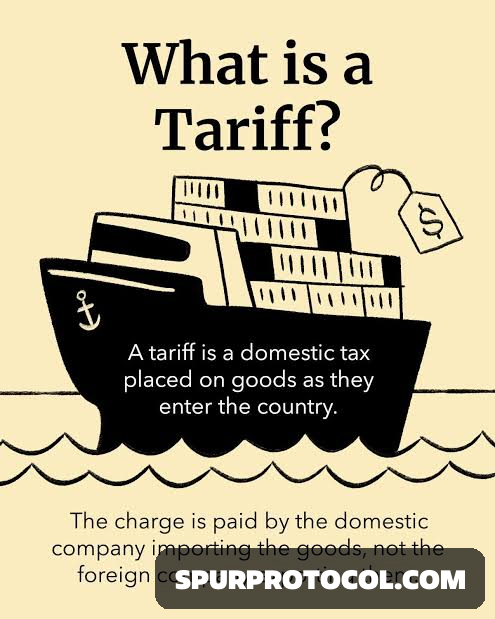Tariff: Meaning, Types, And Impact
What is a Tariff?
A tariff is a tax or duty imposed by a government on imported or exported goods.
Go Back

🕒 9:50 AM
📅 Apr 02, 2025
✍️ By Clovremix
Tariff: Meaning, Types, and Impact
What is a Tariff?
A tariff is a tax or duty imposed by a government on imported or exported goods. The primary purposes of tariffs are:
- To generate revenue for the government.
- To protect domestic industries by making foreign goods more expensive.
- To regulate trade by discouraging imports or encouraging exports.
---
Types of Tariffs
1. Ad Valorem Tariff
- A percentage-based tax applied to the value of the imported goods.
- Example: A 10% tariff on imported cars means if a car costs $20,000, the tariff will be $2,000.
2. Specific Tariff
- A fixed amount charged per unit of goods, regardless of their value.
- Example: A $5 tariff on each bottle of imported wine.
3. Compound Tariff
- A combination of both ad valorem and specific tariffs.
- Example: A car may have a $500 fixed tariff plus a 5% tax on its value.
4. Protective Tariff
- Imposed to protect domestic industries from foreign competition by making imports more expensive.
5. Revenue Tariff
- Aimed at generating income for the government rather than protecting domestic industries.
6. Prohibitive Tariff
- So high that it effectively prevents imports.
7. Retaliatory Tariff
- Imposed in response to another country’s tariff on domestic goods.
8. Anti-Dumping Tariff
- Levied on foreign goods sold below market price to prevent unfair competition.
---
Effects of Tariffs
1. On the Economy
- Positive Impact:
- Protects domestic industries.
- Generates government revenue.
- Encourages local production and job creation.
- Negative Impact:
- Increases prices for consumers.
- Reduces trade and economic efficiency.
- May lead to trade wars if other countries impose retaliatory tariffs.
2. On Businesses
- Domestic Businesses: Benefit from reduced foreign competition.
- Importers & Exporters: Face higher costs and reduced market opportunities.
3. On Consumers
- Higher prices for imported goods.
- Limited product choices.
---
Examples of Tariffs in Action
- U.S. vs. China Trade War (2018-2020): The U.S. imposed tariffs on Chinese goods, and China responded with its own tariffs. This increased prices and disrupted global trade.
- EU Tariffs on U.S. Goods: The European Union imposed tariffs on American products in retaliation for U.S. tariffs on steel and aluminum.

